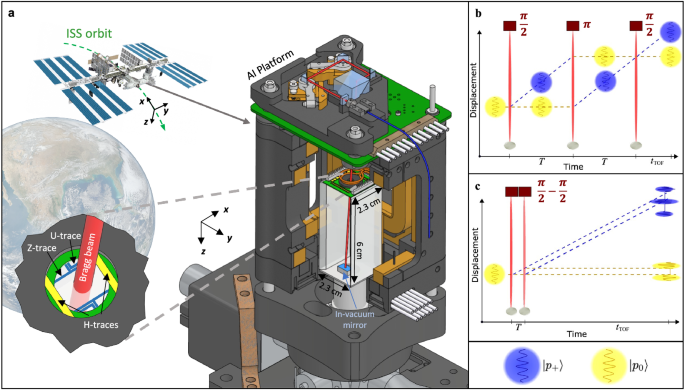2024-08-13 NASA
<関連情報>
- https://www.nasa.gov/missions/station/iss-research/cold-atom-laboratory/nasa-demonstrates-ultra-cool-quantum-sensor-for-first-time-in-space/
- https://www.nature.com/articles/s41467-024-50585-6
パスファインダー、国際宇宙ステーションのコールドアトムラボで原子干渉実験を実施 Pathfinder experiments with atom interferometry in the Cold Atom Lab onboard the International Space Station
Jason R. Williams,Charles A. Sackett,Holger Ahlers,David C. Aveline,Patrick Boegel,Sofia Botsi,Eric Charron,Ethan R. Elliott,Naceur Gaaloul,Enno Giese,Waldemar Herr,James R. Kellogg,James M. Kohel,Norman E. Lay,Matthias Meister,Gabriel Müller,Holger Müller,Kamal Oudrhiri,Leah Phillips,Annie Pichery,Ernst M. Rasel,Albert Roura,Matteo Sbroscia,Wolfgang P. Schleich,… Nicholas P. Bigelow
Nature Communications Published:13 August 2024
DOI:https://doi.org/10.1038/s41467-024-50585-6

Abstract
Deployment of ultracold atom interferometers (AI) into space will capitalize on quantum advantages and the extended freefall of persistent microgravity to provide high-precision measurement capabilities for gravitational, Earth, and planetary sciences, and to enable searches for subtle forces signifying physics beyond General Relativity and the Standard Model. NASA’s Cold Atom Lab (CAL) operates onboard the International Space Station as a multi-user facility for fundamental studies of ultracold atoms and to mature space-based quantum technologies. We report on pathfinding experiments utilizing ultracold 87Rb atoms in the CAL AI. A three-pulse Mach–Zehnder interferometer was studied to understand the influence of ISS vibrations. Additionally, Ramsey shear-wave interferometry was used to manifest interference patterns in a single run that were observable for over 150 ms free-expansion time. Finally, the CAL AI was used to remotely measure the Bragg laser photon recoil as a demonstration of the first quantum sensor using matter-wave interferometry in space.



